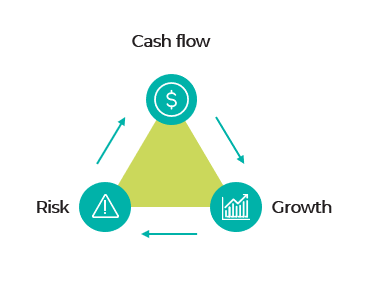Business Owner’s Guide to Understanding Company Value
Practical Advice for Preparing Your Business for the Future
Key Takeaways:
- Whether planning for an exit strategy, assessing growth opportunities or preparing for succession, a valuation provides a strategic framework that goes beyond the immediate financial metrics.
- The balance sheet often doesn’t reflect the fair market value of a business.
- Assets, like goodwill, customer relationships and proprietary processes, play a major role in a valuation.
As a business owner, have you ever wondered what your company is genuinely worth beyond its financial statements? How would you navigate a sale, a merger or even plan for your retirement without a clear picture of your company’s value? Understanding the true valuation of your business is not just about numbers. It’s about empowering yourself with the knowledge to make informed strategic decisions that can significantly impact your future.
Understanding Fair Market Value vs. Book Value
Many business owners focus on the balance sheet to gauge the company’s worth. However, the balance sheet often doesn’t reflect the fair market value of a business.
While the balance sheet represents accumulated assets minus liabilities (book value), the fair market value includes additional intangible assets. These assets, like goodwill, customer relationships and proprietary processes, play a major role in a company’s valuation but may not be evident in financial documents.
The Role of Succession Planning in Business Valuation
For many, especially in family-owned or closely-held businesses, succession planning is important. The transfer of leadership can significantly affect a company’s value—positively or negatively.
Effective succession planning ensures the business can maintain or even increase its value during leadership transitions, providing a sense of security. If a company’s success is tied to the owner’s personal relationships and expertise, its valuation could suffer if these intangibles are not transferable to successors.
Make these assets transferable to preserve and enhance business value during and after the transition.
Comprehensive Valuation Approaches & Inputs
Valuation is an art and science, requiring a balance between quantitative data and qualitative insights. The primary approaches to business valuation include:
- Income Approach: Focuses on expected profitability and cash flow, adjusted for risks and growth potential.
- Market Approach: Compares the business to similar entities in the industry, using sales data of comparable businesses.
- Asset Approach: Often used for liquidation, it evaluates the sum total of a business’s parts.
Each method considers various factors such as cash flow, risk levels and growth prospects—”the three key inputs” in any valuation process.
 Types of Valuation Reports
Types of Valuation Reports
Reports can vary widely depending on their intended use. There are two primary types of valuation reports:
- Calculation of Value: useful for internal decision-making, providing a basic understanding of value.
- Conclusion of Value: necessary for legal purposes, external transactions or complex arrangements, offering a detailed and comprehensive valuation.
These reports provide actionable insights for business owners, such as identifying areas where the business can increase its value, potential risks that could affect future valuation and opportunities for growth that may not have been previously considered.
Whether planning for an exit strategy, assessing growth opportunities or preparing for succession, a valuation provides a strategic framework that goes beyond the immediate financial metrics. For business owners looking to navigate the complexities of market positioning and maximizing company’s potential, contact an Adams Brown valuation advisor.



